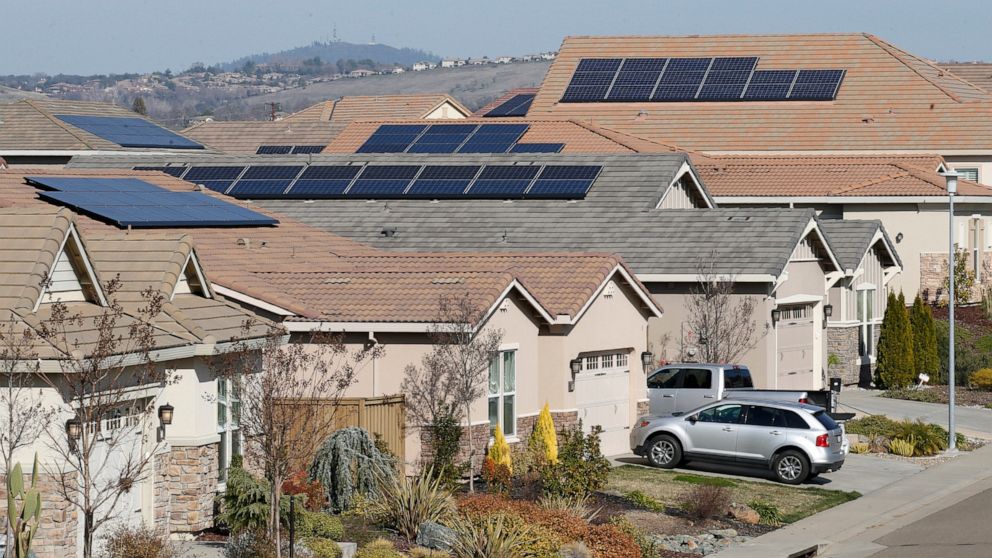SACRAMENTO, Calif.
The CPUC said the reforms are designed to make the program, known as “net energy metering,” more cost effective and to ensure energy grid operation costs are shared fairly.
California now has 1.3 million solar systems on homes, far more than any other state, according to the solar industry.
They say more needs to be done to make sure solar customers — most of whom still rely on power from utilities once the sun goes down — are paying for all the parts of the energy grid they use.
When solar households pay significantly lower electricity bills — or no bills at all — they’re contributing less to those things.
The utilities and the state peg that cost at $3 billion.
The CPUC’s proposal would still allow residential solar customers to sell their excess energy back to the power companies, but at a significantly lower rate.
The charges aren’t as great as what the utilities wanted.
If they take advantage of a roughly $3,200 subsidy to build storage systems, they would move onto the new rate structure right away.
Residential rooftop solar reduces the demand on the electric grid up to 25% during the day, according to the CPUC.
The CPUC’s proposal encourages people who already have solar panels to switch to storage by raising the power rates during those peak evening hours.
